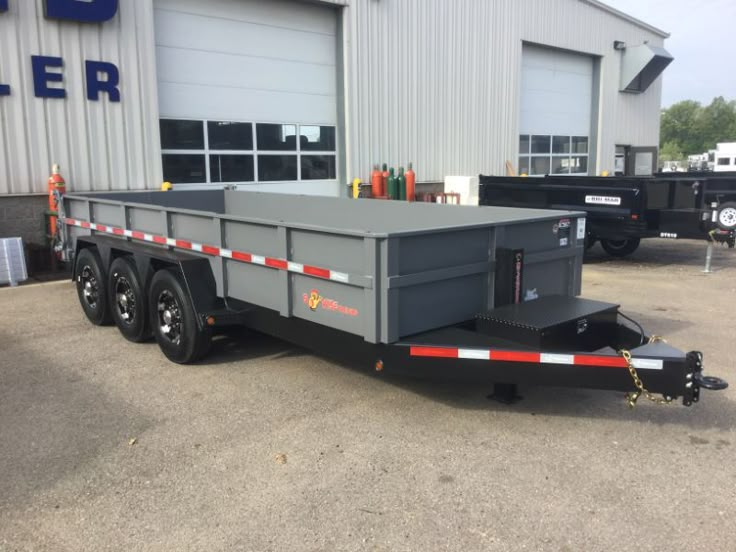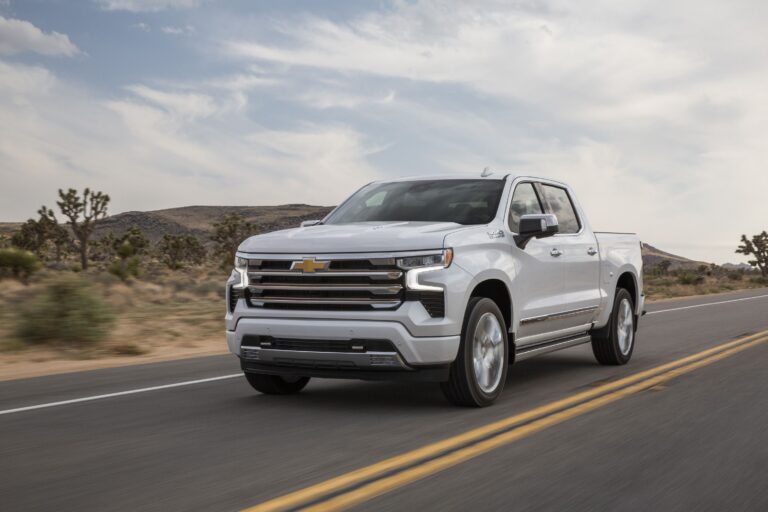1990s GMC Trucks For Sale: A Comprehensive Buyer’s Guide
1990s GMC Trucks For Sale: A Comprehensive Buyer’s Guide cars.truckstrend.com
Introduction: The Enduring Appeal of 1990s GMC Trucks For Sale
The 1990s represent a golden era for American pickup trucks, and GMC, with its robust and stylish offerings, was at the forefront. Today, a significant and growing market exists for 1990s GMC trucks for sale, attracting a diverse range of buyers from nostalgic enthusiasts and first-time truck owners to seasoned collectors and customizers. These vehicles strike a perfect balance: they offer the classic, no-nonsense utility and rugged charm of older trucks, yet boast enough modern amenities and reliability to be practical daily drivers or dependable workhorses. Their timeless design, combined with a reputation for durability and straightforward mechanics, makes them an increasingly attractive option in a world of complex, high-tech vehicles.
1990s GMC Trucks For Sale: A Comprehensive Buyer’s Guide
This comprehensive guide will delve into everything you need to know about finding, evaluating, and purchasing 1990s GMC trucks for sale. We’ll explore popular models, essential inspection points, common issues, and the vibrant aftermarket support that continues to breathe new life into these beloved machines.
The Enduring Appeal of 1990s GMC Trucks
What makes 1990s GMC trucks for sale so desirable in today’s market? Several factors contribute to their lasting popularity:
- Nostalgia and Classic Aesthetics: For many, these trucks evoke a sense of simpler times. The GMT400 platform, in particular, which underpinned most full-size GMC trucks of the era, is celebrated for its clean lines, muscular stance, and iconic design that has aged gracefully.
- Mechanical Simplicity and Reliability: Unlike modern trucks laden with intricate electronics, 90s GMCs are largely mechanical beasts. This means fewer complex systems to fail and easier, more affordable repairs. Their V8 engines, particularly the 5.7L (350 Vortec), are renowned for their bulletproof reliability and longevity when properly maintained.
- Versatility and Practicality: Whether you need a truck for hauling, towing, off-roading, or simply cruising, 1990s GMC trucks deliver. Their robust frames and powerful engines make them highly capable, while their relatively comfortable interiors allow for practical daily use.
- Strong Aftermarket Support: The sheer number of these trucks produced means that parts – both OEM and aftermarket – are readily available and often inexpensive. This makes customization, restoration, and even major repairs surprisingly accessible.
- Affordability (Relative to New Trucks): While prices for clean examples are steadily rising, 1990s GMC trucks for sale generally offer tremendous value compared to the cost of a new pickup, making them an excellent entry point into truck ownership.

Key Models of 1990s GMC Trucks to Look For
When searching for 1990s GMC trucks for sale, you’ll primarily encounter a few key models, each with its own characteristics:
1. GMC Sierra (GMT400 Platform)

The full-size Sierra is the quintessential 90s GMC pickup. It shares its platform with the Chevrolet C/K series, meaning a vast interchangeability of parts.
- Years: 1988-1998 (though some 1999 models were sold as "Classic" alongside the new GMT800).
- Configurations: Available in Regular Cab, Extended Cab, and the rarer Crew Cab (especially in the early 90s). Bed lengths included short (6.5 ft) and long (8 ft).
- Engine Options: A wide range, but the most popular and desirable are the V8s:

- 4.3L V6: Standard in many base models, adequate for light duty.
- 5.0L V8 (305ci): A good balance of power and efficiency.
- 5.7L V8 (350ci): The most common and highly sought-after V8, especially the "Vortec" version (1996-1998) known for increased power and efficiency.
- 7.4L V8 (454ci): The "Big Block" option, typically found in heavy-duty 2500/3500 models, excellent for serious towing.
- Transmissions: Manual options (5-speed) were available, but most you’ll find are automatics (4L60E for half-tons, 4L80E for heavy-duty models).
- Trims: SL, SLE, SLT, and the performance-oriented GT (regular cab short box). The Denali trim was introduced late in the decade.
2. GMC Sonoma (Compact Pickup)
The Sonoma, GMC’s version of the Chevrolet S-10, offered a smaller, more fuel-efficient alternative to the full-size Sierra.
- Years: 1991-2004 (second generation, most common in the 90s).
- Engine Options: Primarily a 2.2L 4-cylinder or the popular 4.3L V6, which gave it surprising pep for its size.
- Why Buy: Ideal for those needing a compact, maneuverable truck for lighter tasks, or for building a custom street truck.
3. GMC Yukon / Suburban (Truck-Based SUVs)
While technically SUVs, the GMC Yukon (and its larger counterpart, the Suburban) are built on the same GMT400 truck platform, sharing engines, transmissions, and many chassis components with the Sierra.
- Years: Yukon (1992-1999), Suburban (1992-1999).
- Why Buy: If you need the utility of a truck but with enclosed seating for more passengers or cargo, these are excellent choices, offering the same reliability and parts availability.
What to Look For When Buying 1990s GMC Trucks For Sale: An Inspection Guide
Purchasing a used vehicle, especially one from the 90s, requires a thorough inspection. Here’s a checklist to help you evaluate 1990s GMC trucks for sale:
- Rust: This is often the biggest enemy of older vehicles. Check:
- Frame: Inspect the entire frame for excessive surface rust, flaking, or rot, especially near suspension mounting points and crossmembers.
- Body Panels: Look at rocker panels, cab corners, wheel wells, and the bottom of the doors. Pay close attention to the bed, particularly the floor and inner fenders.
- Brake Lines & Fuel Lines: These are critical and can rust through.
- Engine:
- Start-up: Listen for abnormal noises (knocking, ticking, excessive valvetrain noise). Look for excessive smoke from the exhaust (blue for oil, white for coolant, black for fuel).
- Leaks: Check for oil, coolant, or power steering fluid leaks. Common spots include the valve covers, oil pan, and especially the intake manifold gasket on 1996-1998 Vortec engines.
- Fluid Condition: Check oil (shouldn’t be milky or excessively dark), coolant (should be clean and correct color), and transmission fluid (red, not brown or burnt-smelling).
- Maintenance History: Ask for service records. A well-maintained engine is key.
- Transmission:
- Shifting: During a test drive, ensure smooth shifts up and down. No harsh jerking, slipping, or delayed engagement.
- Fluid: Check fluid level and condition.
- Suspension and Steering:
- Steering Play: Excessive play in the steering wheel indicates worn steering components (ball joints, tie rods, idler arm, pitman arm).
- Noises: Listen for clunks, squeaks, or creaks over bumps.
- Tires: Check for uneven wear patterns, which can indicate alignment issues or worn suspension parts.
- Brakes:
- Pedal Feel: Should be firm, not spongy.
- Stopping Power: Test braking at various speeds. Listen for grinding or squealing.
- ABS Light: Ensure the Anti-lock Brake System (ABS) light functions correctly (comes on and goes off) and isn’t permanently illuminated.
- Electrical:
- Test all lights (headlights, tail lights, turn signals, brake lights), power windows, power locks, radio, AC/heater, wipers, and gauges.
- Check for any persistent "Check Engine" light.
- Interior:
- Inspect seats for tears, dashboard for cracks, and headliner for sagging. These are common age-related issues but can be indicators of overall care.
- Documentation: Always verify the VIN on the truck matches the title. Ensure the title is clean (not salvage or rebuilt).
Common Issues and Solutions
While 1990s GMC trucks for sale are generally robust, they do have some common quirks and issues due to their age and design:
- Fuel Pump Failure: A notorious GM issue from this era. Symptoms include difficulty starting, stalling, or hesitation.
- Solution: Replace the fuel pump, often a DIY job for those comfortable dropping the fuel tank.
- ABS Module Issues: The ABS module can fail, causing the ABS light to stay on. While the brakes still work, the ABS system won’t.
- Solution: Many companies offer repair services for these modules, or you can find rebuilt units.
- Intake Manifold Gasket Leaks (Vortec Engines 1996-1998): Can lead to coolant or oil leaks.
- Solution: Replacement of the intake manifold gaskets is a common repair.
- Sagging Headliners: The adhesive dries out, causing the fabric to detach.
- Solution: Can be re-glued or completely replaced with new fabric.
- Worn Steering Components: Pitman arm, idler arm, tie rods wear out over time, leading to loose steering.
- Solution: Replace worn components; kits are readily available.
The good news is that most of these issues have well-documented solutions, and parts are readily available and affordable.
Customization and Aftermarket Support
One of the most exciting aspects of owning 1990s GMC trucks for sale is the incredible aftermarket support. Whether you’re looking to restore, modify, or simply maintain your truck, you’ll find an abundance of options:
- Performance Upgrades: Everything from cold air intakes and exhaust systems to camshafts and superchargers for the V8 engines.
- Suspension: Lift kits for off-roading, lowering kits for street trucks, and performance shocks are widely available.
- Wheels and Tires: A massive selection of sizes and styles to transform the truck’s appearance.
- Body and Interior: Replacement body panels, interior trim pieces, LED lighting upgrades, and custom upholstery options.
- Restoration Parts: Many companies specialize in reproducing OEM-style parts, making full restorations feasible.
This extensive support means you can truly personalize your 90s GMC truck to fit your vision and needs.
Where to Find 1990s GMC Trucks For Sale
The search for 1990s GMC trucks for sale can take you to several places:
- Online Marketplaces: Craigslist, Facebook Marketplace, and eBay Motors are excellent starting points. You’ll find a wide range of conditions and prices.
- Dedicated Truck Forums and Websites: Many online communities for C/K and GMT400 trucks have classified sections where enthusiasts sell their vehicles.
- Local Dealerships (Used Car Sections): Less common, but sometimes a dealership will take an older truck on trade.
- Auctions: Online and in-person auctions (e.g., Mecum, Barrett-Jackson for high-end, or local public auctions for project vehicles) can yield finds.
- Word-of-Mouth: Let friends, family, and local mechanics know you’re looking.
Valuation and Pricing Considerations
The price of 1990s GMC trucks for sale varies wildly based on several factors:
- Condition: This is the primary driver. A rust-free, low-mileage, well-maintained truck in excellent condition will command a premium. A rusty project truck will be significantly cheaper.
- Mileage: Lower mileage generally means higher value, though overall condition is often more important than just the number.
- Engine/Transmission: The 5.7L Vortec V8 and the 4L80E automatic transmission (in HD models) tend to be more desirable.
- Trim Level/Options: Higher trims (SLE, SLT, GT) with power options, air conditioning, and specific packages can add value.
- Location: Trucks from dry, southern climates (e.g., California, Arizona) with minimal rust will always be more expensive than those from the "rust belt."
- Market Demand: The market for these trucks has been appreciating, especially for clean, original examples.
Practical Advice and Actionable Insights
- Set a Realistic Budget: Beyond the purchase price, factor in immediate maintenance (fluids, filters, spark plugs), potential repairs, insurance, and registration.
- Get a Pre-Purchase Inspection (PPI): If you’re serious about a truck, especially from a private seller, invest in a PPI by a trusted mechanic, preferably one familiar with older GM trucks. This can uncover hidden issues and save you thousands.
- Don’t Rush: There are many 1990s GMC trucks for sale. Be patient and wait for the right one that fits your budget and criteria.
- Consider Your Intended Use: A daily driver needs to be in better shape than a dedicated project truck.
- Factor in Shipping: If buying out of state, get quotes for transport.
Price Table: 1990s GMC Trucks For Sale (Estimated Ranges)
This table provides general price estimates for 1990s GMC trucks for sale. Prices can fluctuate significantly based on region, specific options, and market trends.
| Model | Year Range | Condition Category | Estimated Price Range (USD) | Notes |
|---|---|---|---|---|
| GMC Sierra 1500 | Early 90s | Project | $1,500 – $4,000 | Needs significant work, rust likely, non-running or major mechanical issues. |
| (GMT400) | (1988-1994) | Driver | $4,000 – $8,000 | Runs, drives, inspectable rust, minor mechanical needs, average interior. |
| Good | $8,000 – $15,000 | Solid, minimal rust, good running condition, minor cosmetic flaws, well-maintained. | ||
| Excellent/Show | $15,000 – $30,000+ | Near-mint, low miles, rust-free, original or high-quality restoration, all features functional. | ||
| GMC Sierra 1500 | Late 90s | Project | $2,000 – $5,000 | Similar to early 90s, but Vortec engines might command slightly more. |
| (Vortec) | (1995-1998) | Driver | $5,000 – $10,000 | More refined interior, better engine performance than early models. |
| Good | $10,000 – $18,000 | High demand for clean Vortec models. | ||
| Excellent/Show | $18,000 – $35,000+ | Premium for low-mileage, rust-free examples. | ||
| GMC Sierra 2500/3500 | All 90s | Driver | $6,000 – $12,000 | Heavy-duty, often higher mileage, 454 V8s are desirable for towing. |
| (Heavy Duty) | Good | $12,000 – $25,000+ | Clean examples can be hard to find and command higher prices. | |
| GMC Sonoma | All 90s | Project | $1,000 – $3,000 | Smaller, less expensive entry point. |
| (Compact) | Driver | $3,000 – $6,000 | Good for light duty, easy to park, 4.3L V6 versions are popular. | |
| Good | $6,000 – $12,000 | Clean examples are sought after for custom builds. | ||
| GMC Yukon/Suburban | All 90s | Driver | $5,000 – $10,000 | Shares mechanicals with Sierra, good for families needing truck capability. |
| (SUV) | Good | $10,000 – $20,000 | Clean Yukons, especially 2-door models, are gaining collector interest. |
Frequently Asked Questions (FAQ) about 1990s GMC Trucks For Sale
Q1: Are 1990s GMC trucks reliable?
A1: Yes, generally speaking, 1990s GMC trucks (especially the full-size Sierras with the 5.7L V8) are highly reliable. Their mechanical simplicity makes them robust and easier to maintain compared to newer, more complex vehicles. Regular maintenance is key to their longevity.
Q2: What’s the best engine for a 1990s GMC Sierra?
A2: For most buyers, the 5.7L (350 cubic inch) V8 is considered the best balance of power, reliability, and parts availability. The "Vortec" version (1996-1998) offers improved horsepower and torque. The 7.4L (454) V8 is excellent for heavy towing but consumes more fuel.
Q3: Are parts still available for 1990s GMC trucks?
A3: Absolutely! Thanks to the massive production numbers and shared platforms with Chevrolet C/K trucks, parts for 1990s GMC trucks are widely available from auto parts stores, online retailers, junkyards, and specialized aftermarket companies.
Q4: How much does it cost to insure a 1990s GMC truck?
A4: Insurance costs vary widely based on your location, driving record, the specific model, and coverage type. Generally, older vehicles like 1990s GMC trucks can be cheaper to insure than newer trucks due to their lower replacement cost. It’s best to get quotes from multiple insurance providers.
Q5: Can I use a 1990s GMC as a daily driver?
A5: Many people successfully use 1990s GMC trucks as daily drivers. With proper maintenance, they are dependable. Keep in mind they won’t have the fuel efficiency, advanced safety features, or luxury amenities of modern trucks, but they offer a unique driving experience and proven reliability.
Q6: What’s the main difference between a GMC Sierra and a Chevrolet C/K from the 90s?
A6: Functionally, they are almost identical, sharing the same platform, engines, and most mechanical components. The primary differences are cosmetic, limited to grilles, headlights, taillights, trim levels, and badging. GMC was traditionally marketed as a slightly more upscale or professional-grade truck, but in the 90s, the distinctions were minimal.
Conclusion: Investing in a Piece of Automotive History
The market for 1990s GMC trucks for sale continues to thrive, driven by their unique blend of classic appeal, robust construction, and practical utility. These trucks represent a sweet spot in automotive history, offering straightforward mechanics that are easy to maintain and repair, combined with a comfortable enough ride for modern use.
Whether you’re seeking a reliable work truck, a blank canvas for a custom build, or simply a dose of automotive nostalgia, a 90s GMC truck offers tremendous value and enduring satisfaction. With careful inspection and a clear understanding of what you’re looking for, you can secure a dependable and characterful vehicle that will serve you well for years to come. Investing in a 1990s GMC truck for sale isn’t just buying a vehicle; it’s acquiring a piece of American automotive heritage that continues to prove its worth on the road today.






